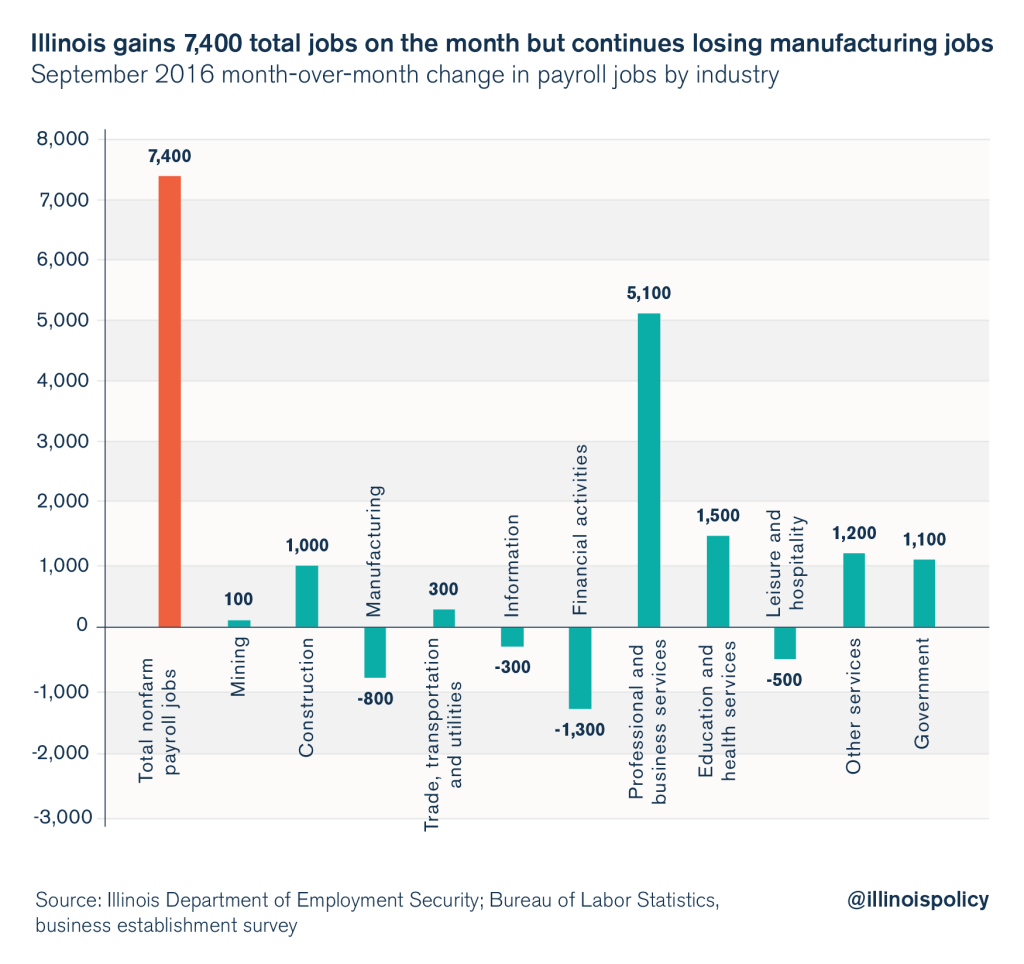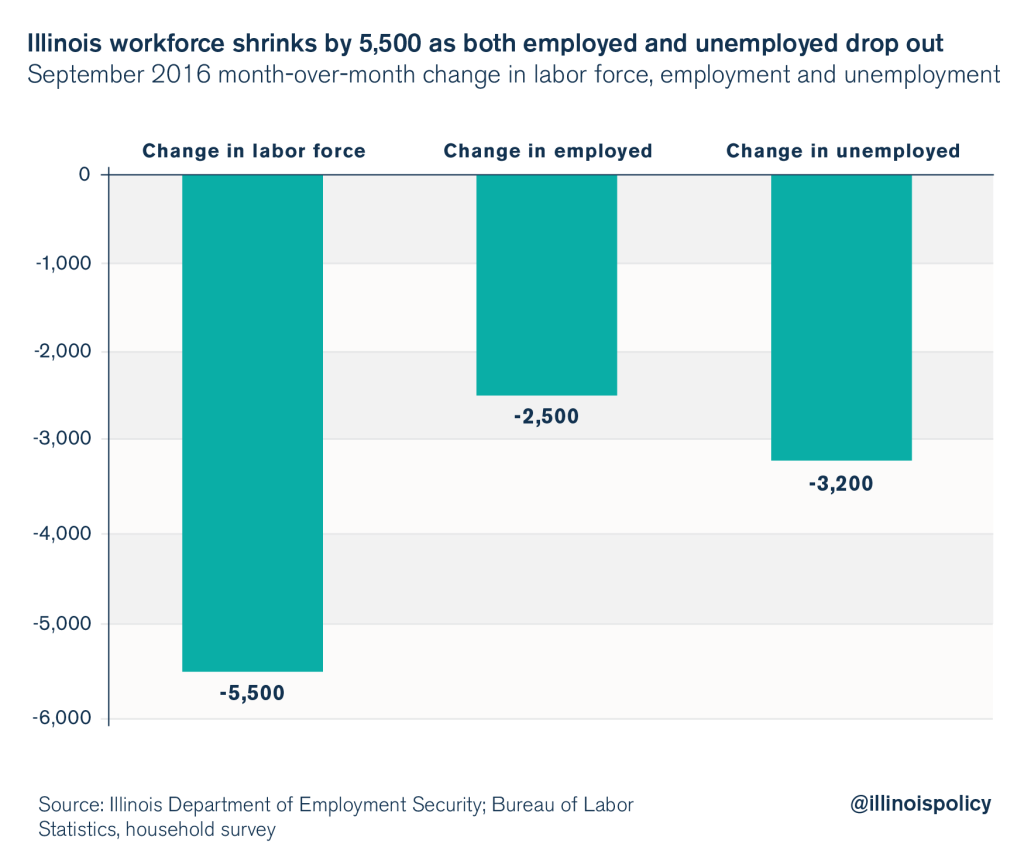September jobs report: Manufacturing jobs down, white-collar jobs up; workforce dropout continues overall
The divergence between professional and blue-collar work continued in September, and a shrinking workforce coincided with steady seasonal out-migration.
Illinois showed a gain of 7,400 payroll jobs in September, but the state’s workforce shrank for the fifth month in a row according to an Oct. 20 economic release from the Illinois Department of Employment Security, or IDES. The unemployment rate stayed steady at 5.5 percent even though 5,500 people dropped out of the workforce. The jobs situation improved for business services and other white-collar industries, but manufacturing experienced another month of losses.
Illinois did see some bright spots in its September payroll jobs report, along with some areas of losses. Professional and business services led with a net gain of 5,100 jobs while education and health services gained 1,500 jobs. On the loss side of the ledger, Illinois dropped 1,300 jobs in financial activities and 800 jobs in manufacturing.

The September report mirrored longer-term trends in Illinois of divergence between blue-collar work such as manufacturing and white-collar jobs in business services. Manufacturing has shed 8,500 jobs year to date, after losing more than 6,000 jobs in 2015. On the other hand, Illinois has gained nearly 30,000 jobs in business services in 2016.
The household portion of the survey showed that Illinois had continued workforce dropout in September. The workforce contracted by 5,500 on the month, with more than half of the workforce dropout attributable to unemployed people leaving the workforce. However, there was not enough of a dropout effect to cause the state’s unemployment rate to move down in September, which occurred in the previous four months.

The unemployment rate dropped from 6.6 percent in April to 5.5 percent in September. However, the entire decline in unemployment during that period is due to workforce dropout. Over the past five months, Illinois’ workforce has shrunk by 105,000 people, and nearly 80,000 of them were formerly counted as unemployed.
This workforce dropout could very well be associated with the summer moving season. Both Bureau of Labor Statistics and Internal Revenue Services data show that Illinois is losing working-age adults to other states. A shrinking workforce over the summer is consistent with working-age Illinoisans, especially the unemployed, leaving the state.
Illinois’ position in the regional economy has suffered as the state’s tax burden has gradually climbed; on top of that, business regulations remain costly and prohibitive, especially for industrial occupations. Hiring in some industries such as manufacturing is clearly more impacted by Illinois’ uncompetitive business climate, driving down well-paying job opportunities in these industries and the downstate communities that depend upon them. On the other hand, service-sector industries continue to do some hiring, despite a relatively anemic growth rate.
Illinois will continue to see out-migration of its working-age population until the state brings its tax burden under control and fosters more job creation.
